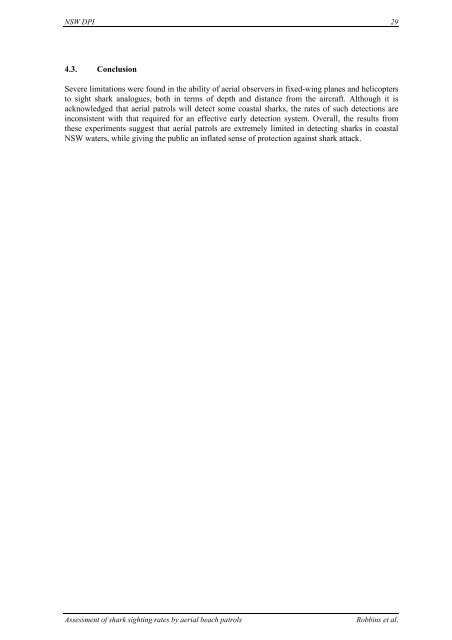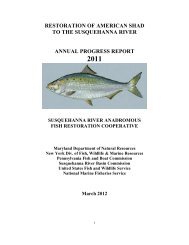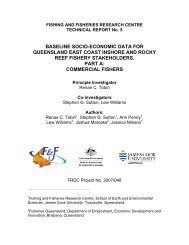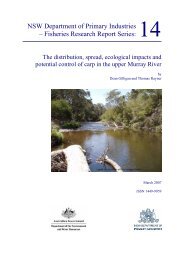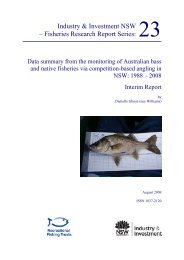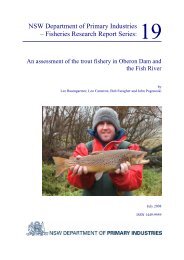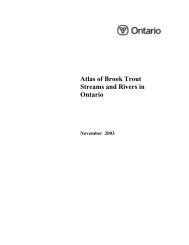Assessment of shark sighting rates by aerial ... - Fisheries Reports
Assessment of shark sighting rates by aerial ... - Fisheries Reports
Assessment of shark sighting rates by aerial ... - Fisheries Reports
You also want an ePaper? Increase the reach of your titles
YUMPU automatically turns print PDFs into web optimized ePapers that Google loves.
NSW DPI 29<br />
4.3. Conclusion<br />
Severe limitations were found in the ability <strong>of</strong> <strong>aerial</strong> observers in fixed-wing planes and helicopters<br />
to sight <strong>shark</strong> analogues, both in terms <strong>of</strong> depth and distance from the aircraft. Although it is<br />
acknowledged that <strong>aerial</strong> patrols will detect some coastal <strong>shark</strong>s, the <strong>rates</strong> <strong>of</strong> such detections are<br />
inconsistent with that required for an effective early detection system. Overall, the results from<br />
these experiments suggest that <strong>aerial</strong> patrols are extremely limited in detecting <strong>shark</strong>s in coastal<br />
NSW waters, while giving the public an inflated sense <strong>of</strong> protection against <strong>shark</strong> attack.<br />
<strong>Assessment</strong> <strong>of</strong> <strong>shark</strong> <strong>sighting</strong> <strong>rates</strong> <strong>by</strong> <strong>aerial</strong> beach patrols Robbins et al.


